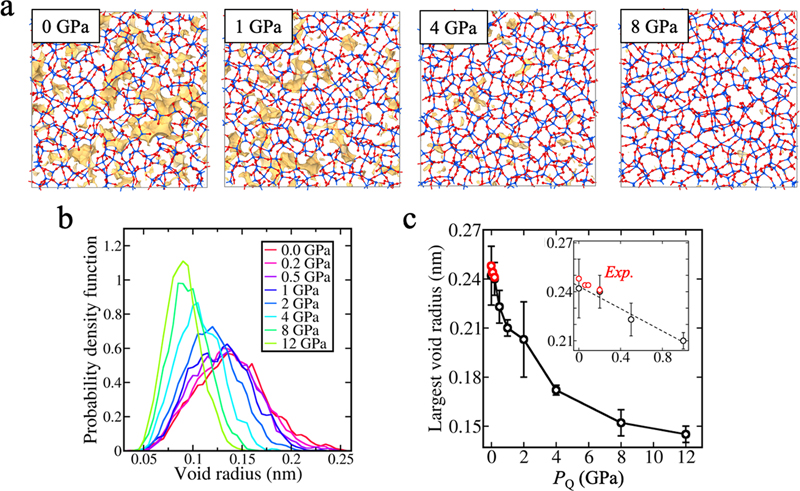| The voids in silica glass (yellow), which are responsible for scattering of light and degradation of signals, become much smaller when the glass is quenched at higher pressures.
(a) Morphologies of voids in four silica glass samples pressure-quenched at 0, 1, 4, and 8 GPa (PQ has been released). The yellow regions are isosurfaces with a minimum distance of 0.1 nm from the surface of any atoms in the glass. In other words, voids with a radius <0.1 nm are not shown. The blue and red atoms are Si and O, respectively. Only a slice of the glass (~10 Å thick) is visualized for clearness.
(b) Void radius distributions at different pressures. The curves are smoothed using a moving average with a step of 0.05 nm.
(c) Variation of the largest void radius from both experiments (red, up to 0.2 GPa) and MD simulations. The inset is a close-up view of the pressure region from 0 to 1 GPa where the dashed line is a guide for eyes to show the consistent trends between the simulation results and the positron annihilation lifetime spectroscopy experiments15. The error bar is calculated from the standard deviation of multiple samples.
(Courtesy of Yongjian Yang, et al., npj Computational Materials). |
